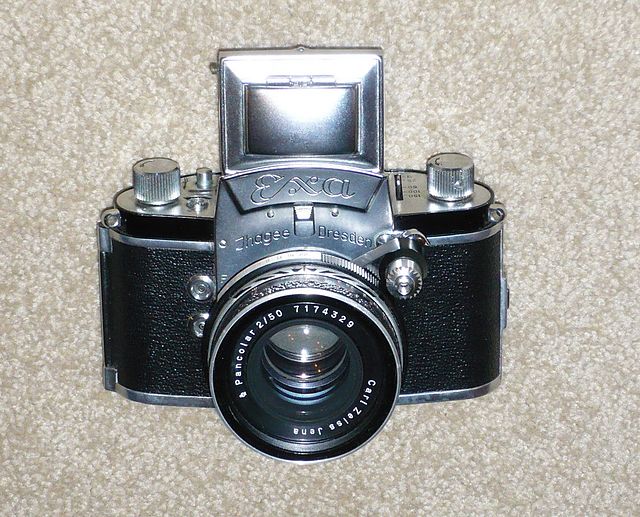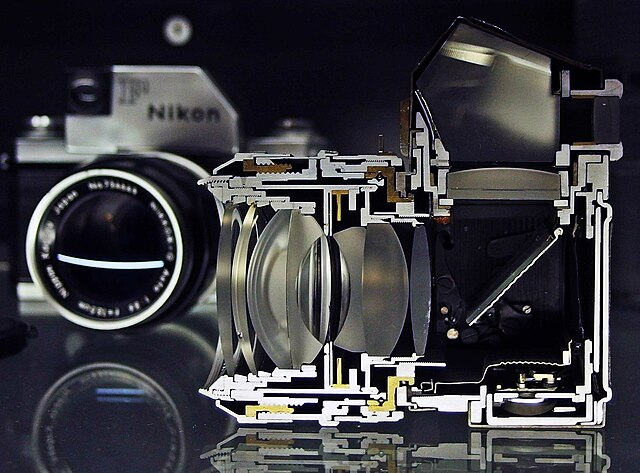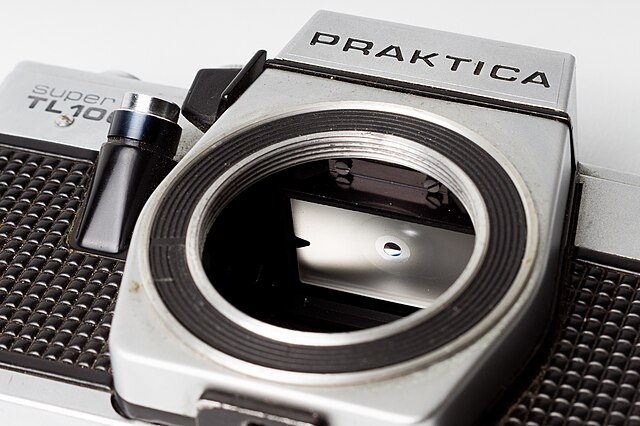The Pentax Auto 110 and Pentax Auto 110 Super were fully automatic single-lens reflex cameras manufactured by Asahi Pentax for use with Kodak 110 film cartridges. The Auto 110 was introduced with three interchangeable, fixed focal length lenses in 1978. A further three lenses were added in 1981 to coincide with the release of the Auto 110 Super the following year. The camera system was sold until 1985. The complete system is sometimes known as the Pentax System 10, apparently for its official Pentax name, although most Pentax advertising only uses the camera name or Pentax-110. This model represented the only complete ultraminiature SLR system manufactured for the 110 film format, although several fixed-lens 110 SLRs were sold. The camera system also claims to be the smallest interchangeable-lens SLR system ever created.
Pentax Auto 110 with the three original lenses.
Asahi Pentax Auto 110
Asahi Pentax Auto 110 Super
Asahi Pentax Auto 110 Super
Single-lens reflex camera
A single-lens reflex camera (SLR) is a camera that typically uses a mirror and prism system that permits the photographer to view through the lens and see exactly what will be captured. With twin lens reflex and rangefinder cameras, the viewed image could be significantly different from the final image. When the shutter button is pressed on most SLRs, the mirror flips out of the light path, allowing light to pass through to the light receptor and the image to be captured.
Ihagee Exa Single lens reflex
The Zeiss Ikon VEB Contax S, manufactured in Dresden, one of the two original pentaprism SLRs for eye-level viewing that went into production in 1949. The Italian Rectaflex offered its first production SLR, the series 1000, the same year.
Cross section of SLR camera.
Focusing screen on Praktica Super TL1000








